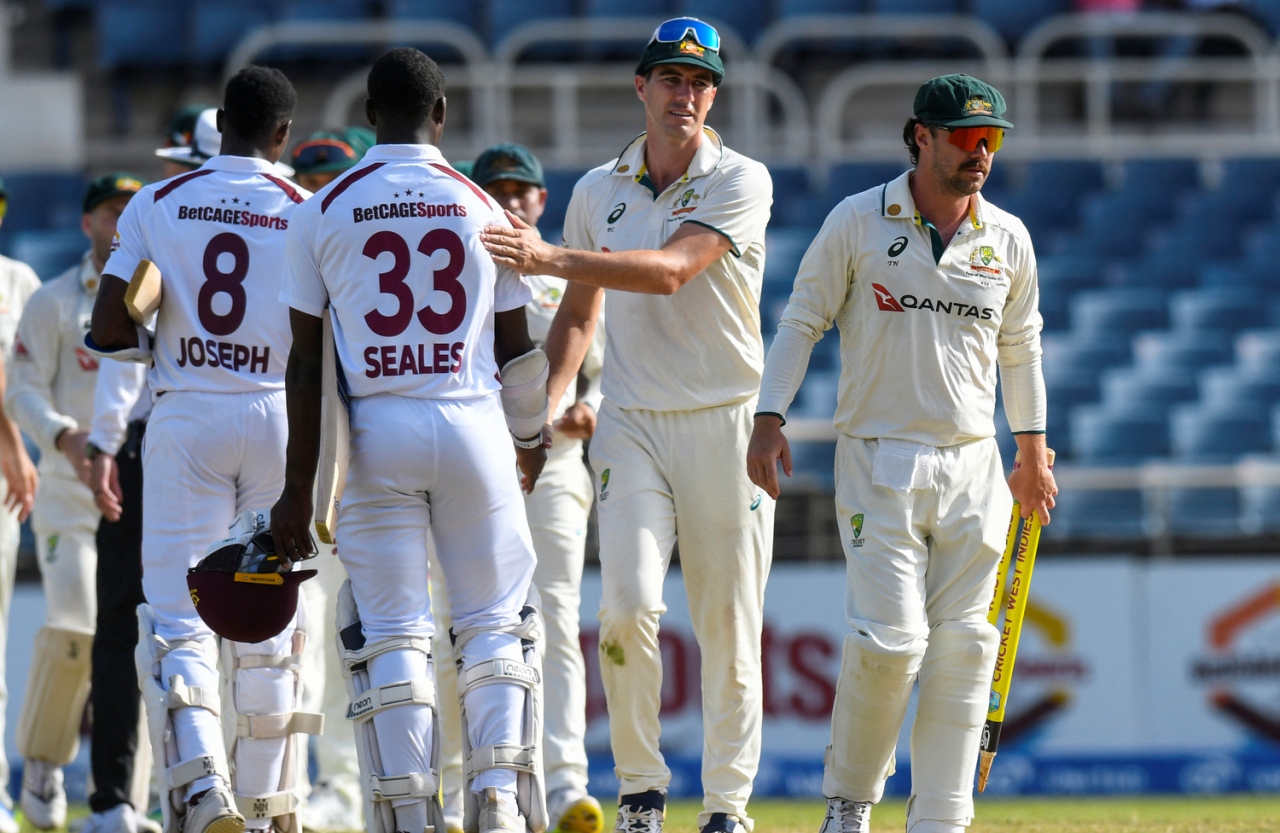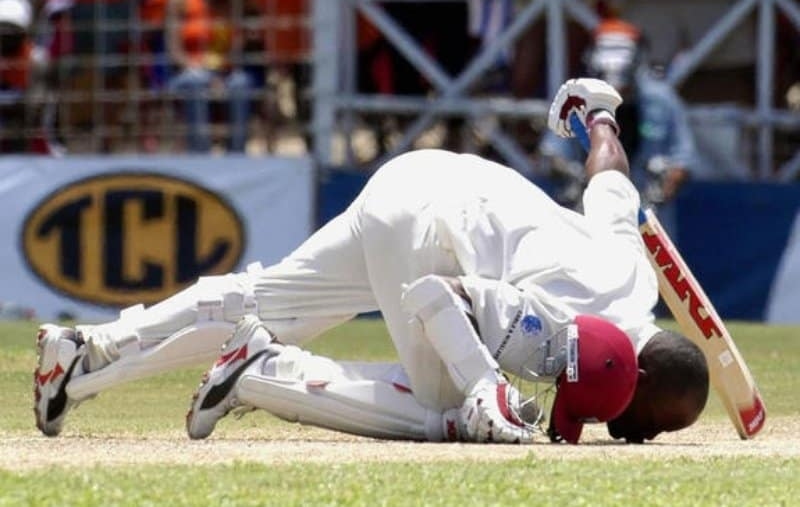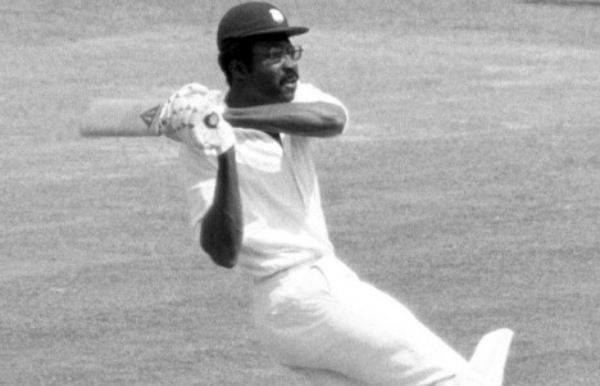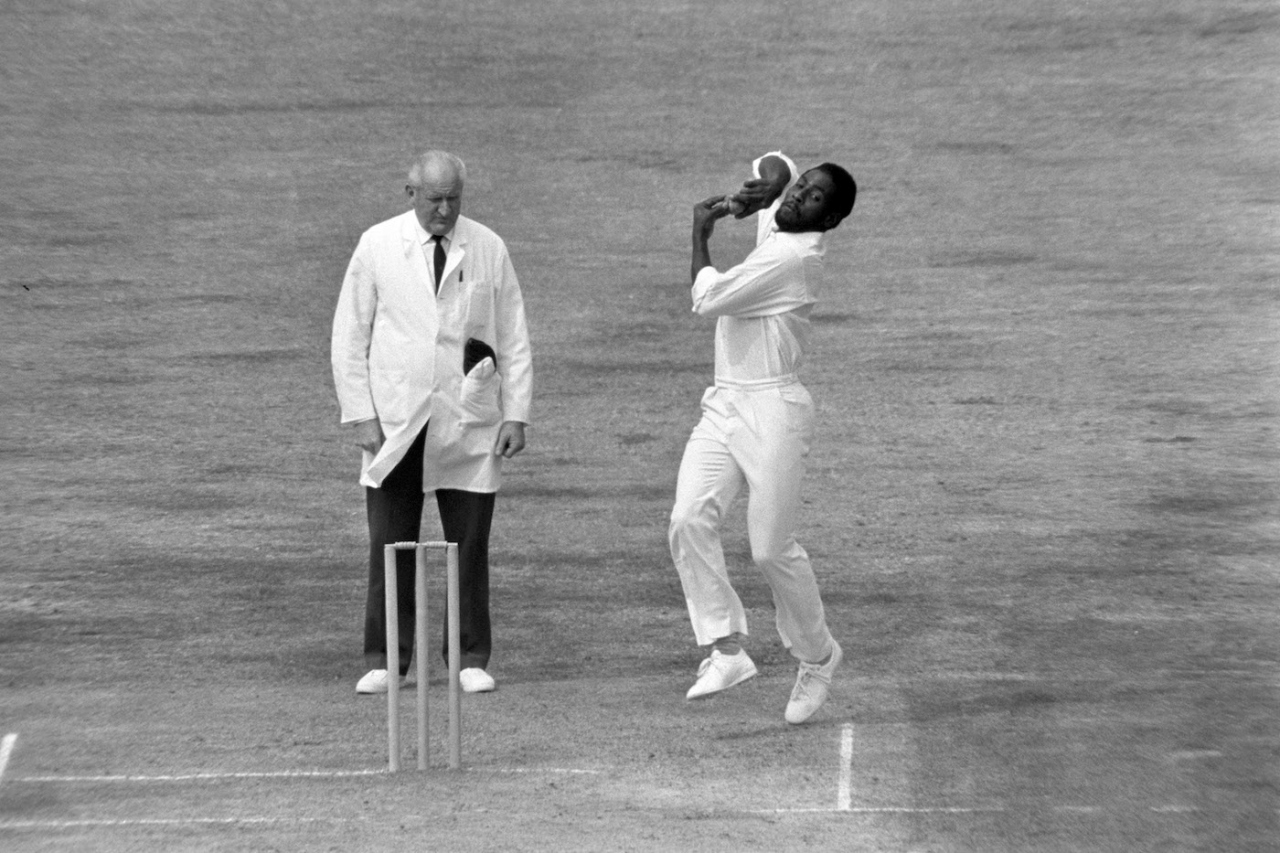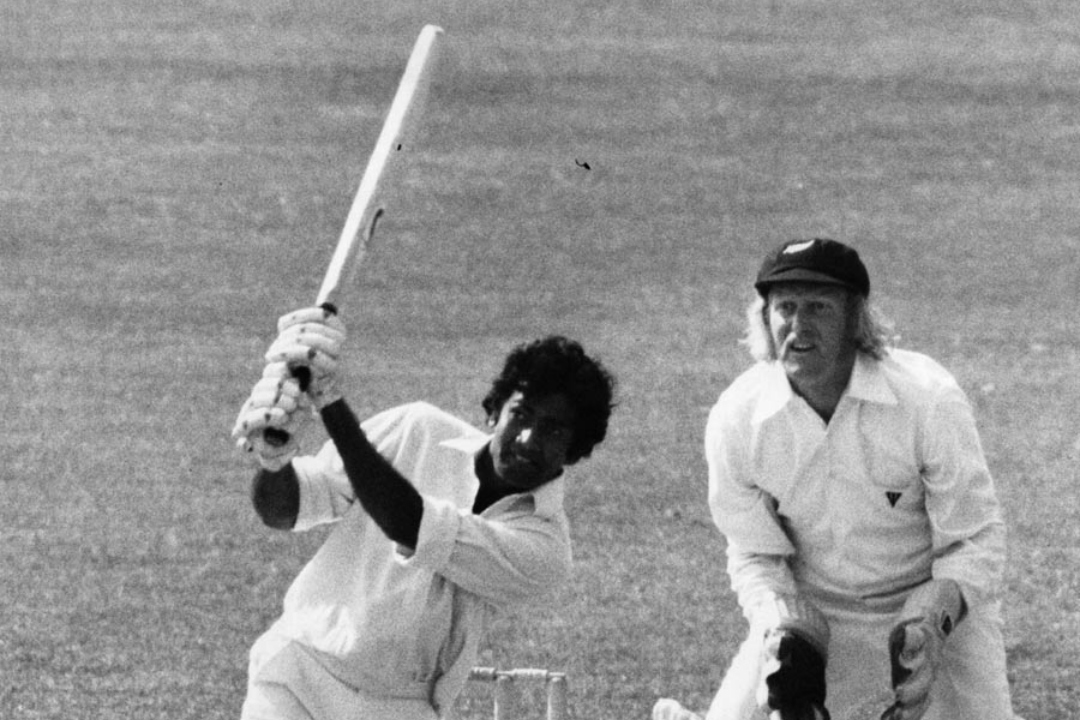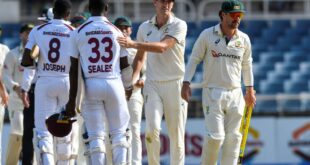Twenty-six centuries and 30 half-centuries.
That, according to the official record, is what the legendary left-handed batsman Garfield St Aubrun Sobers has produced for West Indies.

(via UK Guardian)
But in Sobers’ mind, his record of achievement with the bat is seven 100s and nine 50s, less than half of what the record shows.
Needs explanation? There is a 33-word sentence of his which does precisely that. It’s essential, I daresay, to a proper understanding of Sobers’ cricketing career. Those 30-plus words can be found in his 2002 autobiography Garry Sobers as the lead-in to the prologue.
“For most of my international Test career,” Sobers writes “I was playing for two—myself and my great friend Collie Smith who died one Saturday night in England in a car I was driving.”
Not once in his first three and a half years on the West Indies team did Sobers reach three figures. This despite his clear promise with the bat.
Then, against Pakistan at Jamaica’s Sabina Park in late February 1958, he got to 100 for the first time. Indeed, he went unbeaten all the way to 365, thus supplanting England’s Len Hutton as the record-holder for Test cricket’s highest individual innings.
For 16 more years, Sir Garry continued playing at the highest level, posting 25 more three-figure official Test scores. For 36 years, he retained possession of the world record. Then, in April 1994, he turned up at Antigua’s ARG to witness another gifted West Indian left-hander inspired by him hit 375* to claim it.

(via Belfast Telegraph)
However, whereas Brian Lara’s record also reveals seven double-centuries and Test cricket’s only quadruple-century, Sir Garry’s triple-century stands in glorious isolation. After Sabina ’58, only once would he cross 200 in a Test again.
And it’s no accident that it happened when it did: in Barbados in January 1960.
That was almost nine and a half years before the Prince of Port-of-Spain’s birth. But it was a mere four months after Collie Smith’s death on 6 September 1959.
Replying to England’s 482 in the drawn First Test, WI declared at 563 for 8. With skipper Frank Worrell, who made 197 not out, Sobers put on 399 for the fourth wicket. His individual contribution was his seventh Test century, a cathartic, nearly-11-hour marathon 226, with 24 fours but not one six.

His teammate and close friend Garry Sobers was the driver and was subsequently charged with careless driving and fined £10 for his role in the fatal mishap.
The immense pleasure the innings brought to his innumerable supporters paled in significance beside the morale-boosting value it offered the player himself. The double-century told him unequivocally that he was equal to the task of “playing for two—myself and my great friend”.
He had slain a second ghost!
He had slaughtered the first with his 29th Test innings in Sabina a year and a half earlier. That innings slew the spectre of obvious potential unfulfilled, confirming for all and sundry what many had suspected.
The now unburdened Sobers arrived in Australia in the 1960/61 season with the Collie Smith monkey off his back. Confident in his own abilities, he would leave the cricketing universe in no doubt about his world-class. We all—Martians included!— watched him at work in the Brisbane Tied Test and knew the truth.

Pedestrian, the commentators agreed. That is how the impressive Aussie attack was made to look by his three-hour 132.
In the Third Test in Sydney, Sobers took things up a notch. There, the dazzling 168 off 234 balls he scored was almost universally hailed as “brilliant”. Nowadays, it is a much overused word, almost devalued. Back then, I remind, it was much more judiciously used.
In the five matches of that series, Sobers tallied 430 runs with two centuries while Rohan Kanhai’s final 503 aggregate also included two centuries. Despite batting at numbers three and four in most of the ten innings, the right-hand/left-hand combination had never shared in a substantial partnership.
Worrell worried, it is said, that the pair might strive to outshine each other and so give their wickets away. Tempted to separate them in the order, he deferred it.

The Guyanese right-hander remained at number three for 90 of his 137 Test innings. There, he would eventually make 13 of his 15 Test centuries and 4689 of his 6225 Test runs.
The Barbadian left-hander, having begun his career at #9, would end it with 17, 24, 36 and 57 innings batting at #3 to #6 respectively. In each of those positions, three, six, seven and eight centuries came in aggregates of 1009, 1530, 1895 and 2614.
Worthy of note, though, is that Sobers’ made his top score, 365, batting at #3 and the next two highest, 226 and 198, at #4.
In England in 1963, skipper Worrell finally moved him down to #5. And, says the story, Sir Frank subsequently suggested that he bat at #6. Moving there in the Australian tour of the Caribbean in 1965, #6 was where he most often batted thereafter.

In January 1972, however, leading the World XI in a five-match series against an Ian Chappell-led Australian side, he batted at #5 in Melbourne. Australia, of course, needed no further proof of the uniqueness of his talent with the bat. He nonetheless provided it.
The packed MCG galleries were treated to a superb spectacle of a “merciless” 254-run knock, as one Aussie newspaper headlined it at the time.
After the Brisbane Tied Test in 60/61, Don Bradman had reported to have said that Sobers’ 132 was probably the best innings he had seen. But the Don himself described the 1972 innings as “probably the best seen in Australia […] which nobody who saw it will ever forget.” In it, the West Indian tamed, perhaps even shamed the redoubtable Dennis Lillee.
And, today’s readers need to be reminded, without a helmet!
https://www.youtube.com/watch?v=4JGdMKWZi7A
To the batsmen of his era, Lillee had previously seemed impossible to tame. Impossible to attain is how an aggregate of 8,000 Test runs must have seemed to the West Indies batsmen of Sobers’ era.
Before retiring in 1954, Sir Everton Weekes had played 48 Tests for a grand total of 4455 runs, more than any other West Indian batsman. But when, after 93 Tests, he called time on his career 20 years later, Sir Garry had pushed that record number to 8,032.
In the almost 50 years since his 1974 retirement, that mark has been overhauled by only three West Indian batsmen. They are IVA Richards (8,540 in 121 matches), Shivnarine Chanderpaul (11,867 in 164) and the peerless Prince of Port-of-Spain (11,912 in 130).
Outstanding though those three run-getters were, none appears on the short list of players who have achieved a truly rare feat with the bat. In first-class cricket or at a higher level, only a handful of batsmen have hit six sixes in a six-ball over.
The first to accomplish the feat was Garry Sobers in Swansea in 1968.
Playing county cricket for Nottinghamshire, Sobers thumped the first four and the sixth of Glamorgan spinner Malcolm Nash’s deliveries cleanly over the boundary. And off the penultimate one, he was lucky to get some unsolicited assistance. Spilling a potential catch on the boundary, the long-off fieldsman accidentally helped the ball over the ropes in the process.
Lucky, you say? And which batsman has not enjoyed a huge slice of luck at some point in his cricketing life? Ask Lara, who brushed the stumps in pulling Chris Lewis’ short-pitched delivery to the boundary to go past Sobers’ 365. Fortunately, the bail, dislodged, did not fall off.
The numbers Sobers put up in his cricketing career, as bowler, as batsman and as fieldsman, owe far less to luck than talent and skill. That is beyond dispute.

(Copyright Getty Images)
What about his captaincy numbers? Truth be told, had Sobers as captain had rather more luck than he did, his unproud record would not have to be so frequently defended.
But that’s a story for another day.
|
Wired868 has provided readers with solid, independent journalism since 2012. If you appreciate our work, please contribute to our efforts. Support Independent Journalism |
Earl Best taught cricket, French, football and Spanish at QRC for many years and has written consistently for the Tapia and the Trinidad and Tobago Review since the 1970’s.
He is also a former sports editor at the Trinidad Guardian and the Trinidad Express and is now a senior lecturer in Journalism at COSTAATT.
 Wired868 Wired868 for smart sport news and opinion
Wired868 Wired868 for smart sport news and opinion

